California is set to be battered by ‘atmospheric river’ that will deluge LA and San Francisco
California will be pelted with heavy rain from Los Angeles to San Francisco as an “atmospheric river” engulfs the Golden State.
The City of Angels could see more than six inches of rain, while the Bay Area could see as much as four inches.
The predicted Flood is the result of a weather phenomenon known as an atmospheric river, a band of water vapor that can stretch up to 1,000 miles (1,600 kilometers) long and 350 miles (560 kilometers) wide.
As moisture moves inland, it could bring extreme snow and rainfall, as well as the possibility of flooding.
The storm will batter the Golden State Monday through Friday, with experts warning the conditions could be the first “significant” storm of the season.
California will be pummeled by up to six inches of rain in parts as an “atmospheric river” flows in from Monday. The City of Angels could get hit with more than six inches of rain, while the Bay Area could see as much as four inches
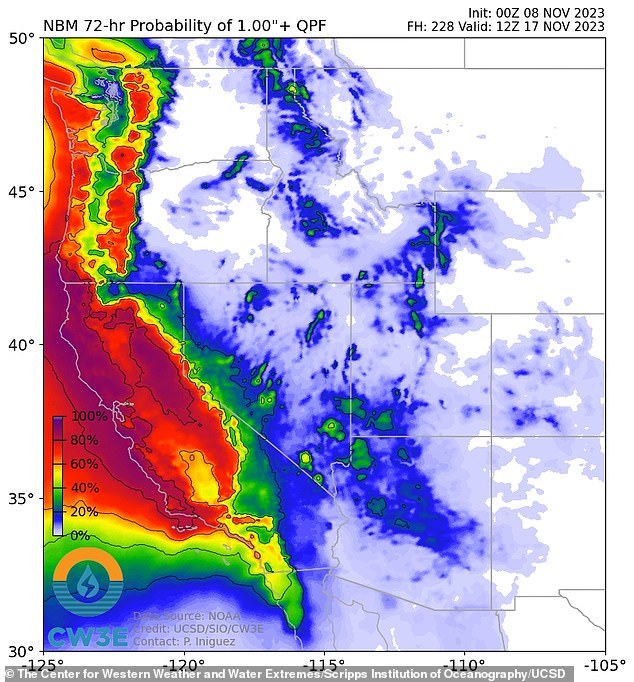
Forecasters said there is a good chance that most of the state will see at least an inch of rain, with many parts expected to see the most precipitation since the start of this year’s rainy season. Modeling the full impact is still uncertain, but there is a good chance that most of California will see at least an inch or more of rain, according to the Center for Western Weather and Water Extremes.
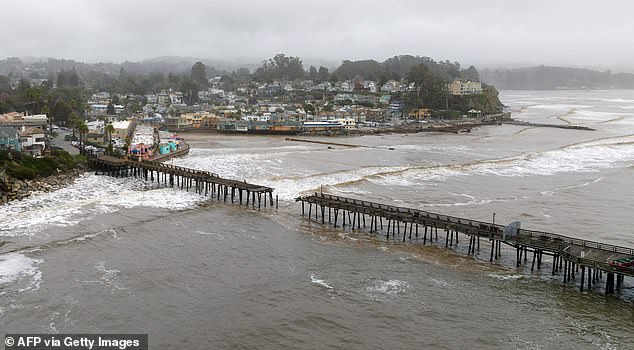
The expected deluge is associated with an atmospheric river, a band of moisture in the air that can cause extreme rainfall as it flows in. This aerial view shows a damaged pier in Capitola, California, on January 9, 2023, after an atmospheric river earlier this year.
“This is really our first winter storm,” Todd Hall, a meteorologist with the weather service’s Los Angeles office, told me SF port.
‘We had rain, but it didn’t do much. It has the makings of having a very significant storm system this early in the season. It looks very similar to something we normally see in January and February.”
Los Angeles residents have already been urged to clean their gutters amid warnings of “potential for flooding, heavy snow at about 6,000 feet, strong southerly winds and big surf.”
Elsewhere, in the north, where it is expected to be wettest, up to five centimeters of rain is forecast.
The state is expected to be inundated with the most rain since the start of the winter season last month.
“We’re seeing rainfall starting to increase Tuesday morning across Northern California sky coverage and pretty much toward the Bay Area,” Richard Bann, a meteorologist with the weather service’s Weather Prediction Center, told SF Gate.
“And as we move through the day from Tuesday through Wednesday, the rain area covers much of Northern California and now into the central part.”
Southern California will likely feel the impact Wednesday through Friday.
Modeling the full impact is still uncertain, but there is a good chance that most of California will see at least an inch or more of rain, according to the Center for Western Weather and Water Extremes.
The center added that some parts would see “fair amounts” of snowfall, with the National Oceanic and Atmospheric Administration’s forecast service predicting an 80 percent chance of 12 inches of new snow in the Sierras.
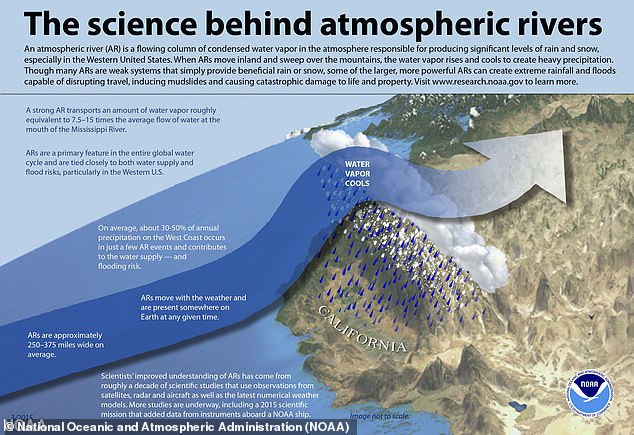
Atmospheric rivers can stretch 1,000 miles long and 350 miles wide; a strong AR transports an amount of water vapor approximately equal to 7.5 to 15 times the average flow of liquid water at the mouth of the Mississippi River
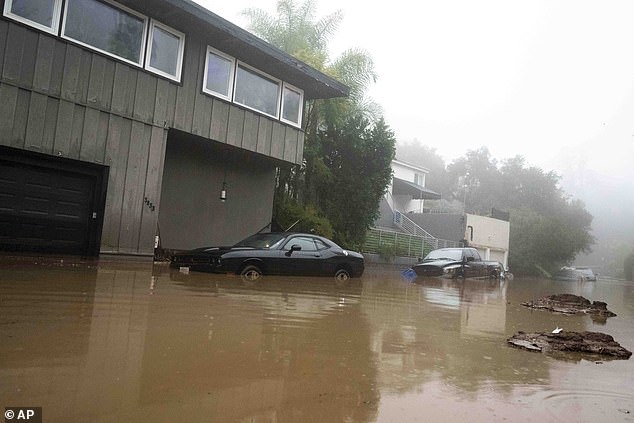
Atmospheric rivers are common in the United States during the winter months and are responsible for 50 percent of all rain and snow in the western part of the country. Pictured: A mudslide that flooded parts of Studio City, California, in January following an atmospheric river
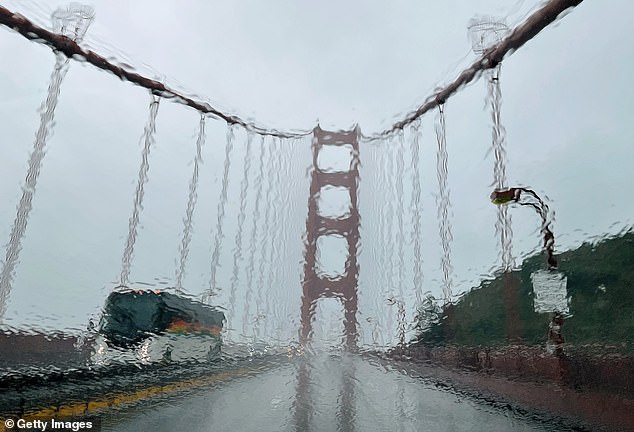
The weather feature will appear starting Monday and last through Friday (file photo of the Golden Gate Bridge)
The National Weather Service Forecast Office in Sacramento is warning locals of “possible heavy mountain snow” between Monday and Friday.
However, Bann didn’t think the storm would produce that much snowfall.
“In the northern end of the Sierras, we’re probably looking at about an inch and a half of liquid,” he added.
“At this point I don’t have a good idea of snow levels, but I do know that given the elevations involved, some of that could certainly be in the form of snow.”
Although these atmospheric rivers are not expected to be particularly strong, at their peak they can transport an amount of water vapor approximately equal to 7.5 to 15 times the average flow of liquid water at the mouth of the Mississippi River.
Last winter, California was ravaged by twelve atmospheric rivers that claimed the lives of 22 people and caused widespread damage due to widespread flooding and landslides.
In December, a winter storm shut down mountain highways, toppled trees and triggered flood and avalanche warnings from the Northern California coast to Lake Tahoe.
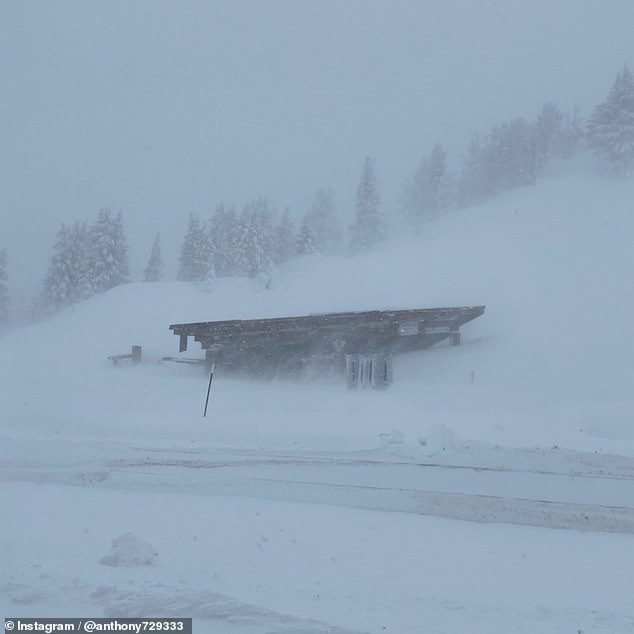
Last winter’s atmospheric rivers resulted in extreme snowfall and led to highway closures due to the whiteout conditions seen here at this rest stop in the Sierra Nevadas
A month later, a state of emergency was declared after more than ten days of storms across the state resulted in the deaths of fourteen people.
Heavy rains caused rivers to overflow, flood vehicles and cause massive power outages.
The state experienced two overlapping weather systems: atmospheric rivers and bomb cyclones, which caused extreme weather phenomena.
While in March, 27,000 people were ordered to evacuate after 16 major rivers in the state flooded.
